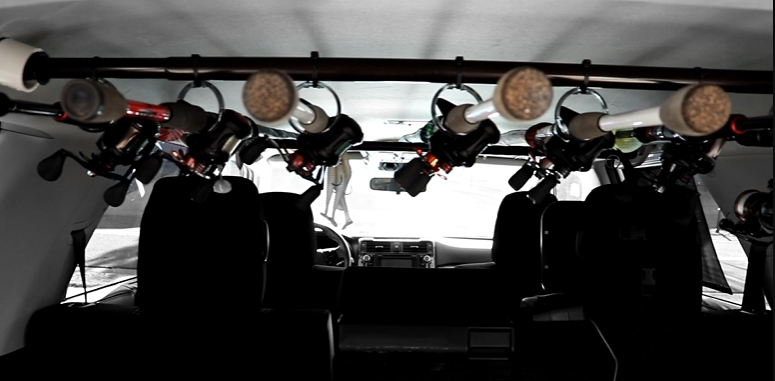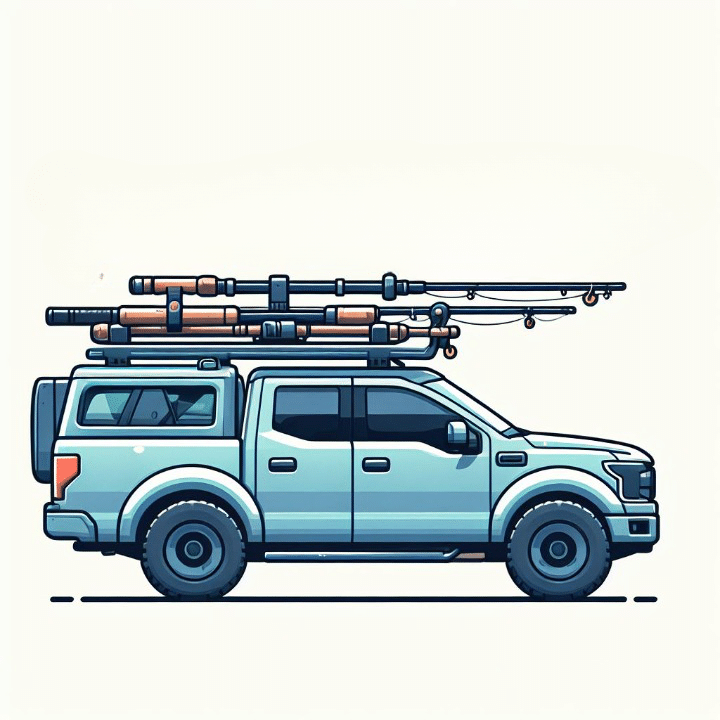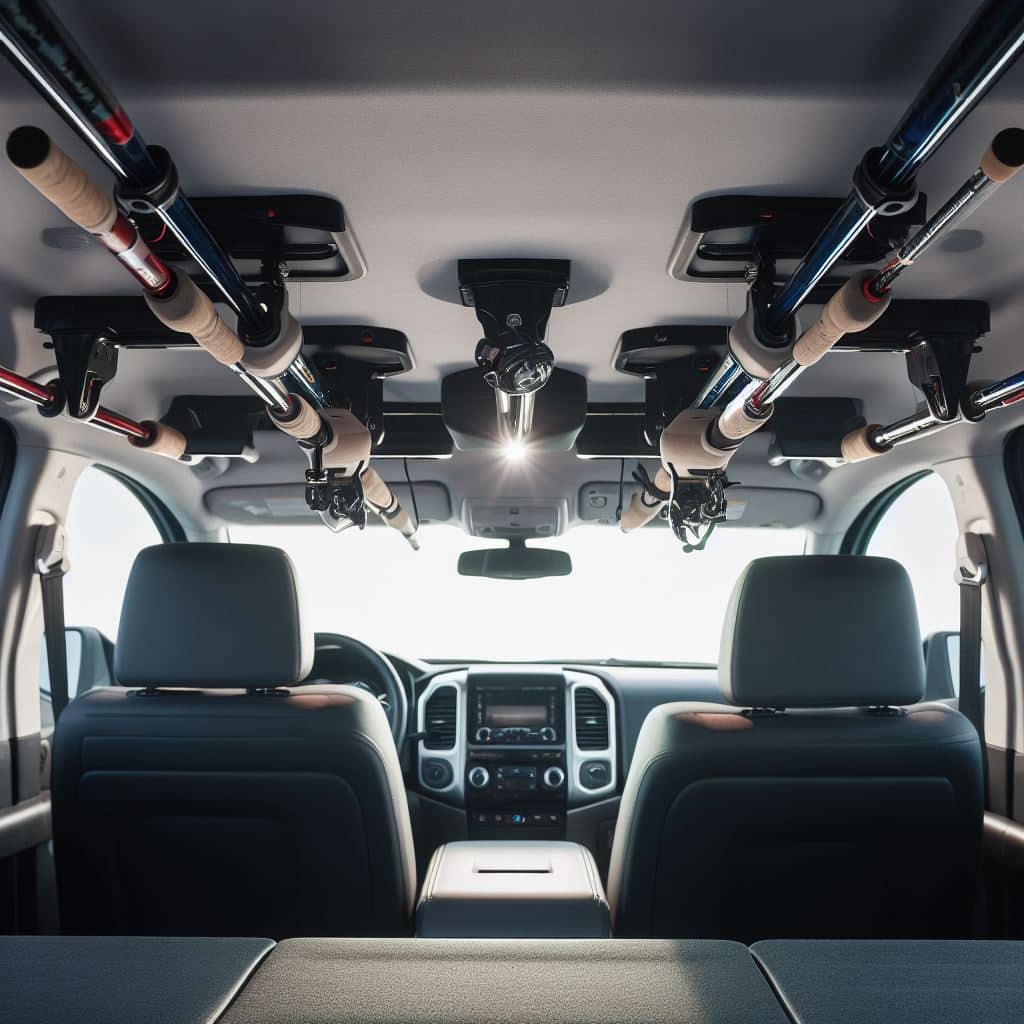
As the popularity of fishing continues to rise, so does the need for hassle-free transportation of fishing gear. Did you know that as of 2020, over 55 million people engaged in freshwater, saltwater, and fly fishing in the U.S. alone?
This growing number reflects the sheer love for this outdoor activity and the increasing need for making the transportation of fishing rods in cars a breeze.
In this article, I’ll show you a step-by-step guide on how to transport fishing rods in car safely and securely.
Table of Contents
How To Transport Fishing Rods In Car: The Basics
There are many different types of fishing rods, including spin casting, baitcasting, fly, and trolling rods.
Each type of rod has its own unique characteristics and requires different methods of transportation.
Spin casting and baitcasting rods can be transported in rod holders or rod sleeves, while fly rods should be broken down into sections and transported in a rod tube.
Trolling rods can be transported in rod holders or rod sleeves, but it is important to make sure they are secured properly to prevent them from moving around in the car.
Best way to Transport Fishing Rods In A Car

Secure your fishing rods in the carrier or bag before placing them in your car. Make sure all the rods are securely fastened and won’t move around during transport.
- If you’re using a roof rack or trunk-mounted carrier, make sure it’s securely fastened to your car before placing the fishing rods on it.
- Place the fishing rod carrier or bag on the roof rack or trunk-mounted carrier, making sure it’s securely fastened and won’t move around during transport.
- If you’re using rod holders or straps, make sure they’re tightly fastened and won’t slip or come loose during transport.
- Double-check that all the rods are securely fastened and won’t move around during transport before hitting the road.
- Make sure that your fishing gear is not blocking the driver’s view; this can be dangerous and illegal, especially if the vehicle is in motion.
Safety Precautions:
- Always make sure that your fishing gear is securely fastened and won’t move around during transport.
- Be aware of the height of your fishing rods while driving, especially when going under low bridges or overpasses.
- Keep your fishing rods in the trunk or on the roof rack and out of the passenger compartment to avoid injury in case of an accident.
You can also watch this video know protect your fishing rods during transport:
Types of Carriers and Attachments
Transporting fishing rods safely is crucial to ensure they remain in good condition and are ready to use once you reach your fishing destination.
There are several carriers and attachments designed specifically for this purpose, each with its own set of benefits and drawbacks.
Roof Racks

Roof racks are one of the most common carriers used to transport fishing rods. They are designed to be installed on the roof of your car, providing a secure space to carry your rods.
Benefits:
- Capacity: Roof racks can carry multiple fishing rods without any hassle.
- Protection: They provide good protection against bends and breakage.
- Accessibility: Easy to load and unload.
Drawbacks:
- Installation: May require professional installation.
- Aerodynamics: Can affect the aerodynamics of your vehicle, leading to decreased fuel efficiency.
- Height Clearance: Vehicles with roof racks may have trouble with low clearance areas.
Popular Models:
- Thule RodVault
- Yakima DoubleHaul
Inside Car Rod Holders

Inside car rod holders are designed to be installed inside your car, usually running along the interior roof or on the back of seats.
Benefits:
- Protection: Provides excellent protection from the elements.
- Convenience: Easy to access from inside the car.
- Space-Saving: Saves exterior space.
Drawbacks:
- Limited Capacity: May have limited capacity compared to roof racks.
- Installation: May require some installation.
Popular Models:
- Inno ZR353 Fishing Rod Holder
- Rod Saver Vehicle Rod Carrier System
Hitch Mount Rod Racks

Hitch mount rod racks attach to the hitch of your vehicle, providing a space to carry your rods horizontally or vertically.
Benefits:
- Ease of Access: Easy to load and unload.
- Capacity: Can carry multiple rods.
- Protection: Offers good protection against damage.
Drawbacks:
- Vehicle Compatibility: Requires a compatible hitch.
- Access to Trunk: May block access to the trunk or tailgate.
Popular Models:
- RodMounts Rod-Up Rod Rack
- Hook’em Rack
Magnetic Rod Racks

Magnetic rod racks attach to the exterior of your car using strong magnets, providing a temporary carrying solution.
Benefits:
- Ease of Installation: Very easy to install and remove.
- Temporary Solution: Ideal for occasional transport.
Drawbacks:
- Security: May not be as secure as other carriers.
- Paint Damage: Potential to scratch or damage car paint.
Popular Models:
- Vac Rac Combi Short Haul External Magnetic Rod Rack
- Catch Cover Magnetic Rod Holder
What if you have a SUV? Read More – How To Transport Fishing Rods In SUV?
FAQs
Can you transport my fishing rods on the roof of my car?
Transporting fishing rods on the roof of your car is possible, but it is not the best option for protecting your equipment. The rods may be damaged by wind and road debris, and they can also be a safety hazard for other drivers on the road.
Can you transport my fishing rods in the trunk of my car?
Yes, you can transport your fishing rods in the trunk of your car. However, it is important to take steps to protect the rods from damage. Consider using a rod tube or rod sock, and be sure to secure the rods, so they do not move around in the trunk during transit.
How many fishing rods can I safely transport in my car?
The number of fishing rods you can safely transport in your car will depend on the size of your car and the size of the rods. It is important to consider the overall length of the rods and the amount of space you have in your car.
It is also important to remember that the more rods you transport, the more important it is to take steps to protect them from damage and to secure them properly.
What should you do if you need to transport my fishing rods on a long trip?
If you are planning a long trip and need to transport your fishing rods, it is important to take extra precautions to protect your equipment.
Consider using a rod tube or rod sock, and be sure to secure the rods, so they do not move around during transit.
If you are traveling on a long trip, it is also a good idea to check on your rods regularly to ensure they are still secure and protected.
Final Words
Transporting fishing rods can be a hassle, but by following the proper steps and taking safety precautions, you can ensure that your gear stays in good condition and you stay safe on the road.
Always make sure to have the right equipment and choose the right type of fishing rod carrier, secure your rods before transport, and double-check that everything is securely fastened before hitting the road.
Consider investing in rod holders or straps and keeping your fishing rods in the trunk or on the roof rack to avoid injury in case of an accident.
